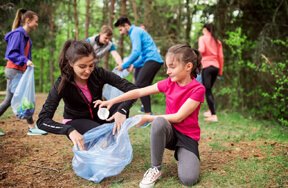Once upon a time, cities didn't have sewage systems so all the stuff that you would flush down the street today would have been thrown into the streets in those days. In fact, many developing countries still do that. Sewage treatment might sound pretty gross, but things sure would be a lot more gross without it. Let's look at how it works.
Sewage - The Basic Rundown
It's standard in the North America to break down sewage treatment into two categories - storm sewers and sanitary sewers. Storm sewers get less treatment - or sometimes none at all. Sometimes it may be processed to remove stuff like car oil. Sanitary sewers are processed to clean up human waste (yup, we're talking about what you think we're talking about - poo). There are many methods for dealing with human waste. The generally accepted method in North America consists of three stages. Check 'em out.
Sewage Treatment - Primary Treatment
This stage begins when your house's pipes connect up with the sewer. When the waste arrives at the treatment plant it goes through "foreign-object protection." The big pieces of waste get filtered out in this stage. The waste goes through a series of filters to get rid of pieces as varied in size from a few feet wide (eeeew, how did that get in there?!) to pieces the size of sand. This stuff all goes to the landfill. Now sewage is separated into sludge and liquid waste.
Sewage Treatment - Secondary Treatment
Secondary treatment removes bacteria and nasty smells from the sludge and water. It usually uses bacteria to consume the available nutrients and organic compounds. Inorganic salts, carbon dioxide and water are left behind. The basic treatment for the sludge is digestion. That's right: it gets eaten! The sludge is pumped into concrete disgesters where bacteria eat the sludge and produce methane. The sludge is drained of any remaining water. The dry sludge can then be sold to farmers who use it to enhance their soil.
Sewage Treatment - Tertiary Treatment
Tertiary treatment, which means the third level of treatment, removes all the rest of the junk from the remaining water, to restore it to a more natural state. Nitrates and phosphates are usually the most dangerous chemicals left in the water. Algae and rotifers (aquatic organisms) are used to absorb these chemicals. The water is sterilized and then released back into






























